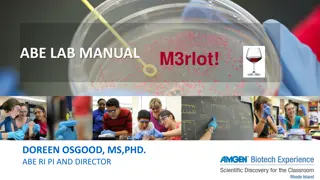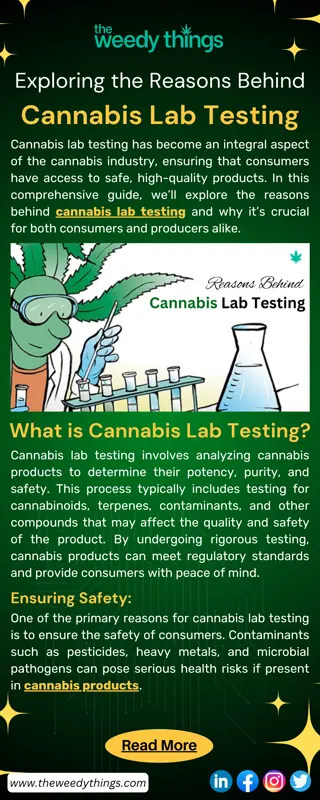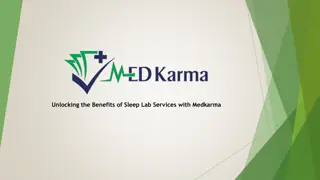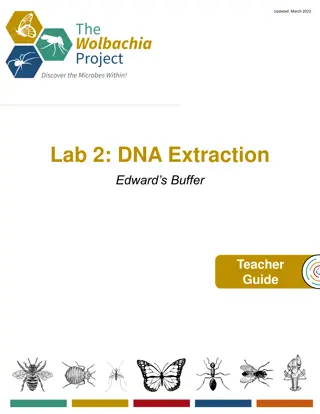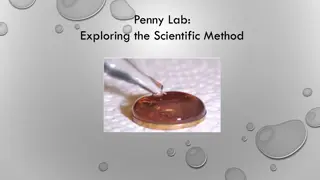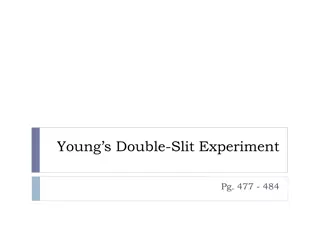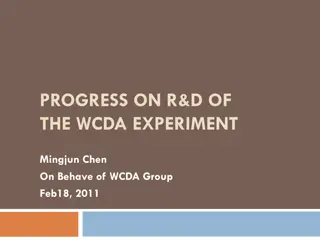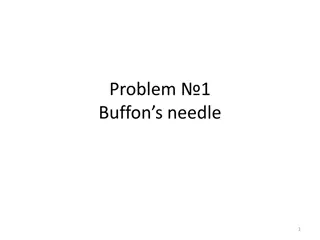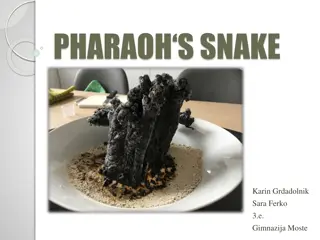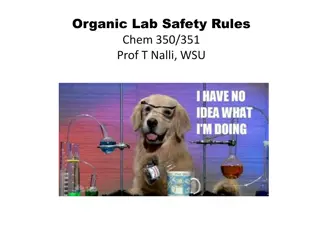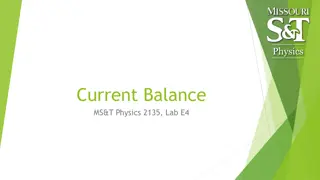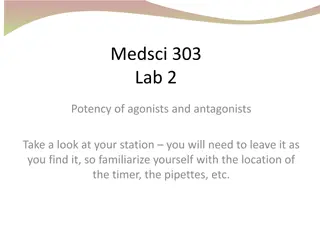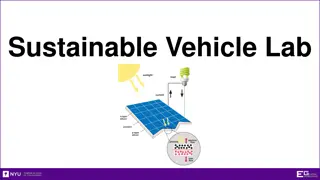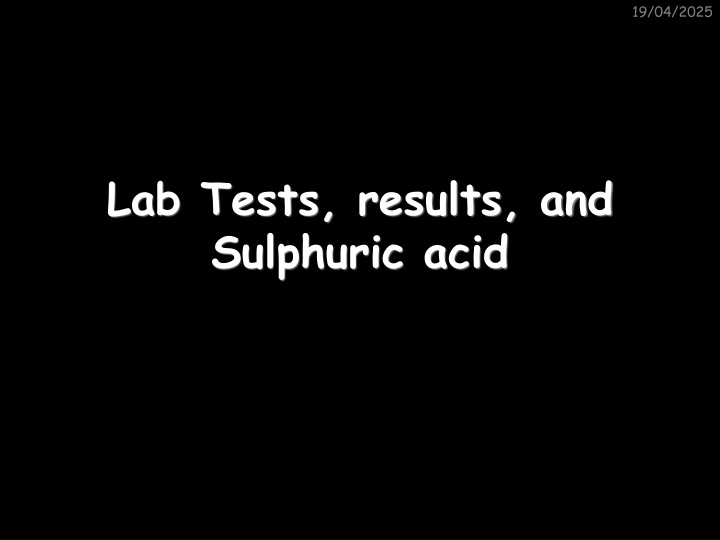
Chemical Reactions in Laboratory Experiments
Explore laboratory tests involving sulphuric acid, carbon dioxide, metal ions, flame tests, and more. Learn about reactions with carbonates, metal compounds, and precipitation to understand chemical properties better.
Download Presentation

Please find below an Image/Link to download the presentation.
The content on the website is provided AS IS for your information and personal use only. It may not be sold, licensed, or shared on other websites without obtaining consent from the author. If you encounter any issues during the download, it is possible that the publisher has removed the file from their server.
You are allowed to download the files provided on this website for personal or commercial use, subject to the condition that they are used lawfully. All files are the property of their respective owners.
The content on the website is provided AS IS for your information and personal use only. It may not be sold, licensed, or shared on other websites without obtaining consent from the author.
E N D
Presentation Transcript
19/04/2025 Lab Tests, results, and Sulphuric acid
Testing for carbon dioxide 19/04/2025 Gas Limewater Limewater turns milky/cloudy
Adding acid to carbonates Carbonates are compounds containing carbon and oxygen. When an acid is added to a carbonate the carbonate starts to fizz. A gas called _________ _______ is produced. 19/04/2025 Calcium carbonate + hydrochloric acid calcium chloride + carbon dioxide + water CaCO3(s) + HCl(aq) CaCl2(aq) + CO2(g) + H2O(l) 2
Flame tests 19/04/2025 Compound Colour of flame
Flame tests 19/04/2025 Compounds containing lithium, sodium, potassium, calcium and barium can be recognised by burning the compound and observing the colours produced: Lithium Red Sodium Yellow Potassium Lilac Calcium Brick red Barium Green
Metal ions 19/04/2025 Metal compounds in a solution contain metal ions. For example, consider calcium chloride: Calcium is in group 2 and has two electrons in its outer shell, so it will form a Ca2+ ion. Chlorine is in group 7 so a chloride ion will be Cl- Calcium chloride has the formula CaCl2
Metal ions and precipitates 19/04/2025 Some metal ions form precipitates, i.e. an insoluble solid that is formed when sodium hydroxide is added to them. Consider calcium chloride: Ca2+(aq) + OH- Ca(OH)2 (s) 2
Metal ions and precipitates 19/04/2025 Some metal ions form precipitates, i.e. an insoluble solid that is formed when sodium hydroxide is added to them. Consider calcium chloride: Ca2+(aq) + OH- Ca(OH)2 (s) 2 Metal ion Precipitate formed Colour Calcium Ca2+ Calcium hydroxide: Ca2+(aq) + OH-(aq) Ca(OH)2 (s) White Aluminium Al3+ Magnesium Mg2+ Copper(II) Cu2+ Iron(II) Fe2+ Iron(III) Fe3+
Testing for chloride and sulphate ions 19/04/2025 For each test state: 1) The colour of the precipitate 2) What compound it is Test 1: Chloride ions Add a few drops of dilute nitric acid to the chloride ion solution followed by a few drops of silver nitrate. Precipitate formed = silver chloride (white) Test 2: Sulphate ions Add a few drops of dilute hydrochloric acid to the sulphate ion solution followed by a few drops of barium chloride. Precipitate formed = barium sulphate (white again)
19/04/2025 Ammonium, nitrate, bromide and iodide ions Ammonium ions: Add sodium hydroxide and test the gas using damp litmus paper ammonia gas turns damp litmus paper blue. Nitrate ions: Add sodium hydroxide followed by aluminium powder and test using damp litmus paper. Bromide and iodide ions: Add a few drops of dilute nitric acid followed by a few drops of silver nitrate solution. A pale yellow precipitate should be formed for bromide ions and a darker yellow precipitate for iodide ions.
Thermal decomposition A thermal decomposition reaction occurs when a compound breaks down ( decomposition ) through the action of heat. 19/04/2025 Practical work: Perform a thermal decomposition reaction on each of these compounds and state: 1) The colour changes you observed 2)The reaction that happened Copper carbonate: CuCO3 (s) CuO(s) + CO2 (g) (Green Black) Zinc carbonate: ZnCO3 (s) ZnO(s) + CO2 (g) (White Yellow)
Sulphuric acid 19/04/2025 Sulphuric acid has many important uses car batteries, detergents, fertilisers etc. How sulphuric acid is made: Step 1: Burn sulphur in air: Sulphur + oxygen sulphur dioxide Step 2: Pass the sulphur dioxide over a vanadium oxide catalyst at 450OC: Sulphur dioxide + oxygen sulphur trioxide Step 3: Dissolve the sulphur trioxide in sulphuric acid: Sulphur trioxide + conc. sulphuric acid oleum Step 4: Add water to the oleum: Oleum + water sulphuric acid
Sulphuric acid 19/04/2025 Step 2 in the manufacture of sulphuric acid is an example of a reversible reaction: 2SO2 + O2 2SO3 Endothermic Exothermic What would happen if the temperature was decreased? The reaction would favour the production of sulphur trioxide BUT the reaction would happen at a slower rate. Solution use 450OC as a compromise
19/04/2025 This powerpoint was kindly donated to www.worldofteaching.com http://www.worldofteaching.com is home to over a thousand powerpoints submitted by teachers. This is a completely free site and requires no registration. Please visit and I hope it will help in your teaching.

